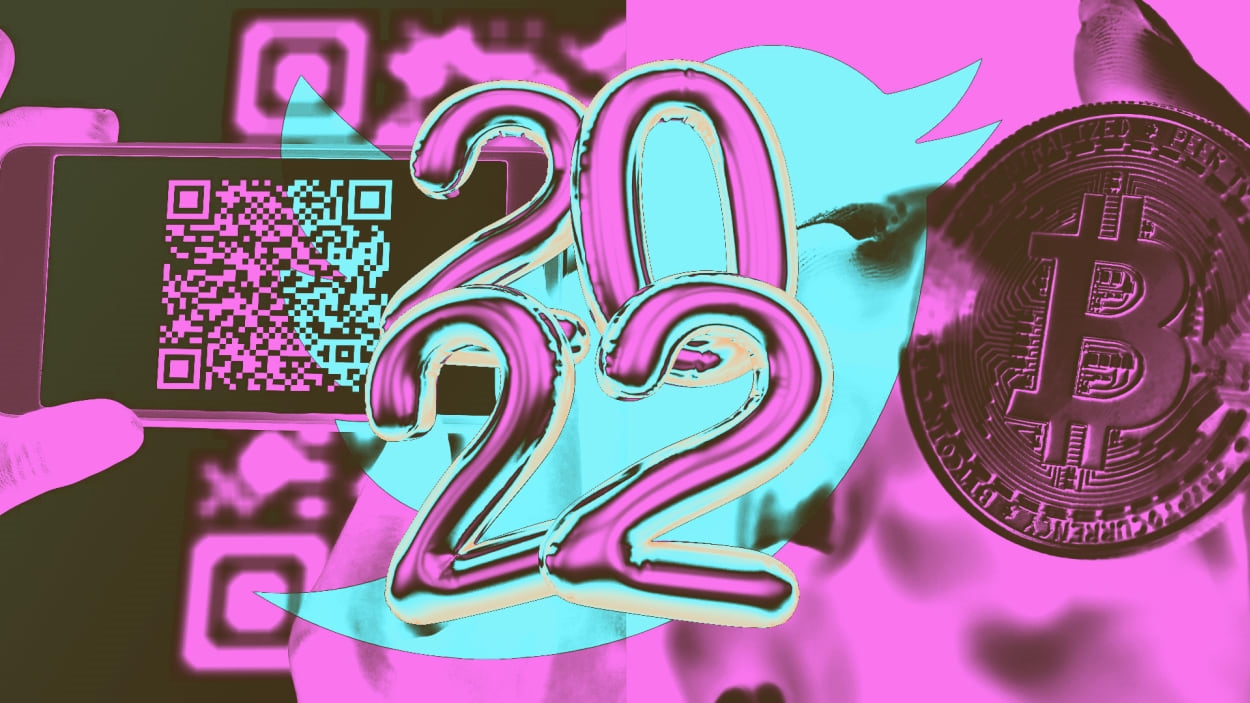12 dumbest tech moments of 2022
For all of its breakthroughs and advances, there’s a lot of really dumb stuff that goes on in the world of technology, and 2022 had more than its share of baffling moments, head-scratching decisions, and products that make you wonder how they ever made it beyond the first pitch meeting.
While there were certainly some breakthrough events this year, we couldn’t help but catalog the more ridiculous ones. Here’s a look at the dumbest tech moments of 2022 (with the full understanding that there’s still a bit of time left for even bigger ones to occur).
Musk spending $44 billion to “own the libs”
Elon Musk’s purchase of Twitter was inexplicable from the start. He offered a ridiculous premium on the stock price that many people initially took as a joke, since it included the numbers 420 in the offer price. After agreeing to buy the platform basically “as is,” he seemingly realized his folly and tried to back out, only to be backed into a corner and forced to go through with the deal.
Right-wingers celebrated the acquisition, saying Musk’s announced changes would be devastating to liberals. Even Musk joined in on the joke in May, tweeting, “Whoever thought owning the libs would be cheap never tried to acquire a social media company!” Running that social media company and “owning the libs” has been far from a cakewalk. Musk’s focus on Twitter has led to Tesla shares losing more than half of their value year to date.
SBF allegedly using FTX as his own personal piggy bank
The extent to which things went wrong at FTX, whether through negligence or fraud, is still being investigated—and it might be a while before the whole picture is clear. But especially curious are the numerous reports that Sam Bankman-Fried’s Alameda Research was trading billions of dollars from FTX accounts and leveraging the FTX token as collateral—all completely under the radar.
SBF claimed in an interview with Andrew Ross Sorkin at The New York Times DealBook Summit that he was unaware that there was a commingling of funds, but in the process seemed to make several incriminating statements (something that could easily be a separate item on this list).
Beyond the issues that led to FTX’s collapse, the bankruptcy filing by the company noted that “corporate funds of the FTX Group were used to purchase homes and other personal items for employees and advisors,” and that Bankman-Fried’s hedge fund loaned $1 billion to Bankman-Fried directly as well as $2.3 billion to Paper Bird, an entity 100% controlled by him.
Andreessen Horowitz investing another $350 million in Adam Neumann
At one point WeWork was valued at $47 billion. Then, in the blink of an eye, it all fell apart. Founder Adam Neumann was blamed for the failure, but he still walked away with hundreds of millions of dollars.
Despite that history, his charisma and salesmanship charmed the venture world once more in 2022, and Flow—his attempt to transform the residential rental real estate market—was given $350 million by Andreessen Horowitz, which famously invested early in Facebook and Airbnb. That set Flow’s valuation at $1 billion before it opened its doors.
Twitter firing people, and then immediately hiring them back
Elon Musk’s reign at Twitter has been filled with a whole list’s worth of baffling moments—including banning journalists and VC Paul Graham, as well as conducting a Twitter poll to decide whether Musk should step down as CEO—but this one in particular stands out.
Staff cuts were always coming to Twitter, but Musk began swinging the axe with a Lizzie Borden-like glee. On November 4, Twitter unceremoniously laid off 50% of its workforce. Days later, there was the realization that some of the affected workers were terminated by mistake—and others had skills and experience essential for the future of the company. So a scramble took place to lure them back.
Among those impacted workers was apparently the person or team in charge of sending confirmation codes for SMS two-factor authentication, meaning many users were temporarily locked out of their accounts after logging out.
Not everyone who came back stayed for long. Musk ordered more layoffs and insisted employees agree to a brutal work schedule or resign a few weeks later. Twitter had 7,500 workers when Musk took over. Today it has dwindled to roughly 25% of that number.
Zuckerberg making Meta employees change his avatar after everyone made fun of him
No one loves the metaverse more than Mark Zuckerberg (and certainly no one is spending as much money on it as he is), so you have to think the Facebook founder was beaming with pride when he released a screenshot of his Horizon World avatar in front of a virtual Eiffel Tower.
The internet, however, had other thoughts, instantly turning the glassy-eyed illustration into a meme while media outlets lambasted the poor graphics. Zuckerberg reacted quickly, posting an updated avatar a few days later, saying, “I know the photo I posted earlier this week was pretty basic—it was taken very quickly to celebrate a launch. The graphics in Horizon are capable of much more.”
Dyson unveiling the Dyson Zone
Right before April Fool’s Day, Dyson unveiled the Dyson Zone, a product that combines a noise-canceling headphone with a personal air filter. Most people thought it was a joke. It wasn’t.
In December, the company announced a price for the odd-looking music/protection device, slated for release next year: $949. That’s almost twice what Apple charges for AirPods Max headphones.
People blindly clicking a QR code during the Super Bowl
Super Bowl LVI earned the nickname the “Crypto Bowl” as several crypto brokerages shelled out for expensive commercial slots, including the FTX commercial that led to Larry David being named as a defendant in a class-action lawsuit. But none was more daring than Coinbase, which bought a 60-second window and filled it with a QR code bouncing around a black screen.
People who scanned the code were guided to the company’s website and encouraged to sign up, with the promise of free Bitcoin. That’s all well and good, but security experts warn that blindly scanning a QR code can make people vulnerable to all sorts of scams. And while there was no malicious code in the commercial, people who did scan it likely had no idea where it would lead them, since there was no on-screen indication what company or organization was behind the code.
No one learned a lesson from the Super Bowl. The following month, at SXSW, a swarm of more than 400 drones banded together to make a QR code in the sky, which proved to be a promotion for the Halo series on Paramount+.
Soma Capital requiring applicants to take an IQ test
Soma Capital found itself in hot water in March after screenshots of a job application for the venture firm showed the requirement that would-be employees take an IQ test as well as a Myers-Briggs personality quiz. (Forcing applicants to take an IQ test is illegal under a 1971 Supreme Court ruling.) Founder Aneel Ranadive scrambled to apologize via social media soon afterward, tweeting that the firm would “work 10x harder to be clear on culture.”
Better.com bringing back the CEO who laid off 900 people via Zoom
Employees at the once high-flying mortgage startup were shocked when 900 coworkers were unceremoniously terminated on a Zoom call last December. The backlash to the cold nature of those dismissals, as well as reports of an adversarial management style, led to CEO Vishal Garg stepping back from his role with the company less than a week later.
Many expected he would quietly exit for good, but roughly a month after departing, Garg returned to the CEO position, promising to “be more conscious of the impact” of his words. Since then, the company has had additional layoffs, and in November, a former director sued Better.com for allegedly dismissing him less than one hour after he requested his previously granted maternity leave begin immediately following the early birth of his daughter.
Seth Green having to pay $300,000 to get his stolen NFT back
The heyday of NFTs earlier this year led to a rash of hacker attacks. Among the victims was actor Seth Green, whose Bored Ape Yacht Club NFT, which he had been building a TV series around, was stolen when he fell for a phishing attack. The hackers quickly sold the NFT to another collector who was reluctant to return the ape. Green ultimately convinced that collector, known as “Mr. Cheese,” with a payment of 65 Ether, worth just under $300,000 at the time (and now worth closer to $80,000).
Theranos swag becoming a hot seller on eBay
The conviction of Theranos founder Elizabeth Holmes on two counts of wire fraud and two counts of conspiracy to commit fraud sparked a renewed interest in the company. And sure enough, it didn’t take long for people to capitalize on that.
EBay was flooded with Theranos swag, which was snatched up for breathtaking prices. One fleece pullover was listed for $500, while a Theranos-branded windbreaker was priced at $1,000.
NYC’s mayor agreeing to be paid in Bitcoin
Eric Adams turned heads when he announced he would convert his first three paychecks to Bitcoin. (Actually, he said he would take his check in Bitcoin, but it’s against city rules to pay in cryptocurrency, so he seemingly used the first three checks to buy Ethereum and Bitcoin on Coinbase.) In the end, though, it likely didn’t pan out as the best economic decision. While we don’t know the breakdown of Bitcoin and Ethereum purchases, we do know that both have lost more than 50% of their value since that time.
(25)



